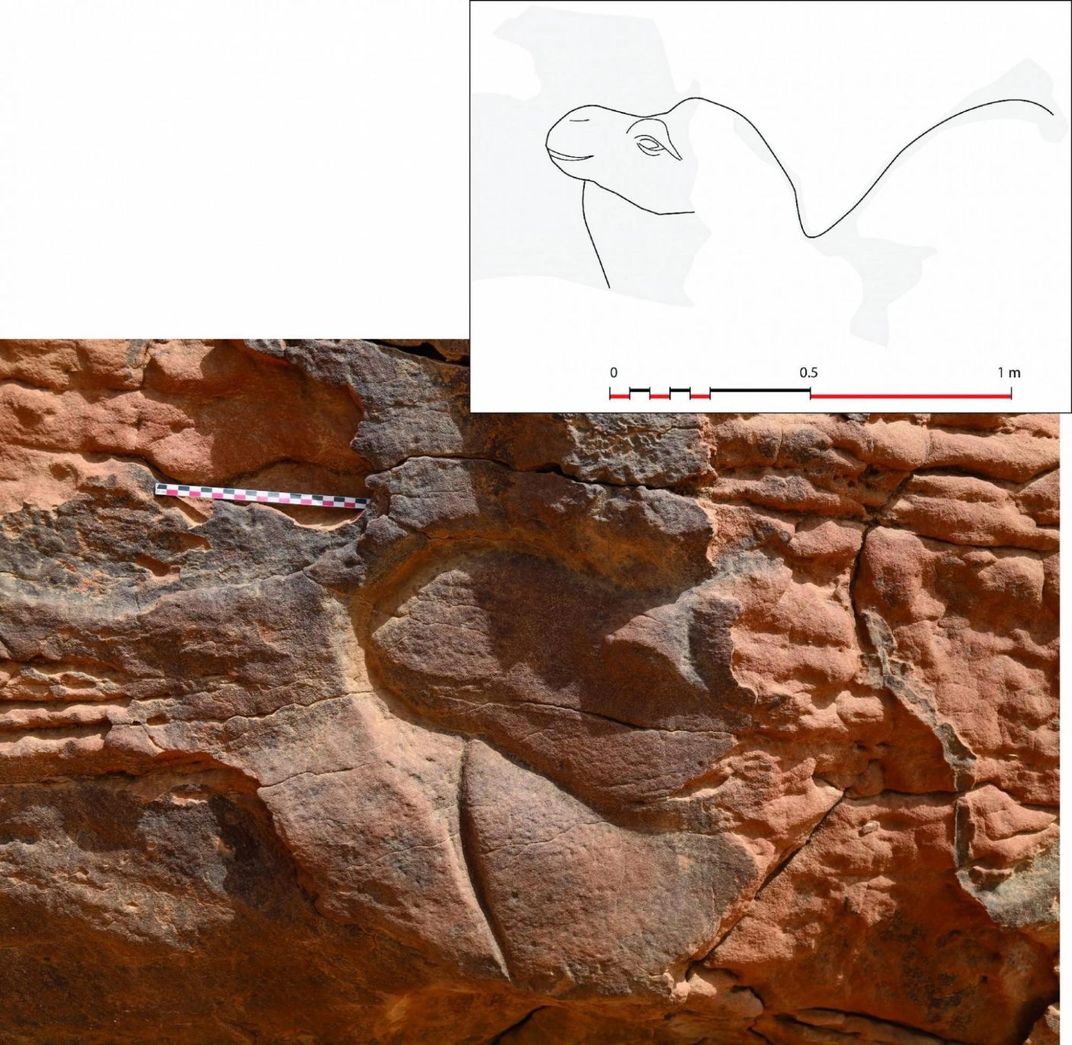Life-Size Camel Carvings Found in the Saudi Desert
Archaeologists estimate the reliefs are 2,000 years old but are unsure what culture made them
/https://tf-cmsv2-smithsonianmag-media.s3.amazonaws.com/filer/b4/ce/b4cef030-7d80-46d2-988f-d91840e0f752/camel.jpg)
Researchers working in a remote spot in northern Saudi Arabia have found around a dozen reliefs and sculptures of camels and donkeys carved into a rock formation. As Ruth Schuster at Haaretz reports, the works in the "Camel Site" as it's become known as, have been tentatively dated to around 2,000 years ago, but researchers are not certain which culture produced them.
According to a press release by the French National Center for Scientific Research (CNRS), a CNRS researcher along with members of the Saudi Commission for Tourism and National Heritage first examined the sculptures in the Al Jawf province of northeastern Saudi Arabia in 2016 and 2017. The works were carved into three rocky spurs, and though erosion has taken a heavy toll on the pieces, researchers are still able to discern many of the artworks.
The pieces include 11 unharnessed camels and two equids—donkeys, mules or horses—grazing in natural environments. Notably, the carvings are distinct from other rock art found in the region, and they show a level of skill unseen in other carvings seen the Saudi desert. The site also includes a rare depiction of a camel meeting a donkey, an animal that does not appear very often in rock art in the area. The findings are described in detail in a new paper, published in the journal Antiquity.
Besides the carvings, little is currently known about the site and the people who created it. No tools or artifacts have been found in the area. According to the press release, the researchers believe the area was likely not a settlement but may have been a stop for travelers on a caravan route passing through the region. It could have also been a site for veneration or some sort of boundary marker.

While the art itself is worth investigating, George Dvorsky at Gizmodo reports that the archaeologists have another motive for bringing it to the public’s attention. The site is currently on private property and has been damaged by erosion, looting of blocks of stone and bulldozers in recent years. In the study they write they hope to “generate awareness of endangered cultural heritage and to ensure the rapid preservation of the site by the Saudi state.”
Schuster reports that there is much researchers can still learn from the site. The date, for instance, remains uncertain. Besides the lack of associated artifacts, erosion has removed any tool marks, making it difficult to find what technology was used to make the camels. The style of the camels is also unique, making it hard to associate them with any other cultures in the region. The closest may be the Nabateans, a nomadic desert culture known for its rock reliefs that eventually settled down to found the city of Petra. But it will take more work and a technique known as micro-erosion analysis to gain further insight about the site.
This isn’t the only baffling structure found in the Saudi Desert recently. Last year, archaeologists used Google Maps to find 400 stone “gates” built with rocks on the desert floor. Those structures may date back as far as 7,000 years. Archaeologists also found artifacts and evidence of 46 lakes that used to exist in Saudi Arabia’s Nefud Desert last year, lending evidence to the “Green Arabia” theory, which suggests the area has swung between periods of desertification and a wetter climate which attracted plant, animals and even early human ancestors.